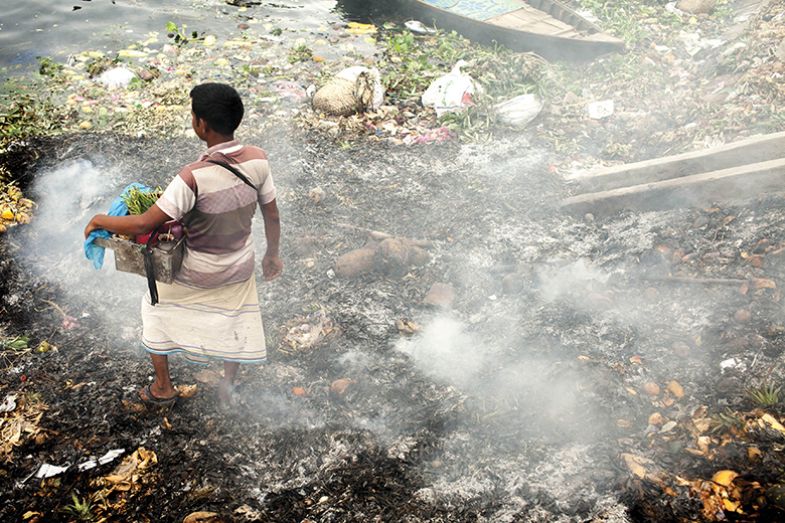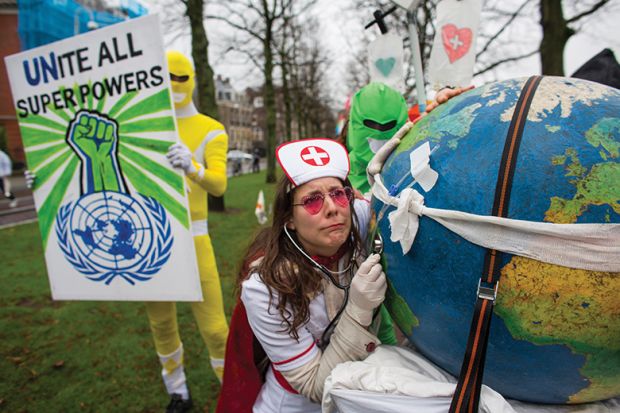This new book by Rupa Marya and Raj Patel offers insights into what one might call the political economy of inflammation. Although it is normally thought of as a medical phenomenon, their analysis extends inflammation beyond the biological and anatomical realms to locate both its root causes and its manifestations in the environmental, cultural and political milieu that surrounds us from birth.
From a medical point of view, inflammation has been linked to a swathe of conditions from cancer to Alzheimer’s and diabetes. This book dedicates a chapter to each bodily system, explores the inflammatory pathways and conditions affecting them, and specifically links them to the sociopolitical and politico-economic factors that are responsible for overpowering negative influences upon them.
Inflamed draws on the concept of the exposome, which it defines as “the sum of lifetime exposures to nongenetic drivers of health and illness, from conception to death”. It therefore encompasses “chemical, social, psychological, ecological, historical, political, and biological elements that determine whether aging cells will become drivers of chronic systemic inflammation”.
The book starts with the system that is often recognised as the regulatory hub for many other bodily processes, namely the immune system. The dysregulations it is subject to are linked in this analysis to continued exposure to injustice, such as that arising from racial discrimination, poverty, colonisation or chronic exposure to toxic substances.
“Cellular aging is determined, in part, by the length of the ends of our chromosomes – called telomeres,” we read. While these “noncoding repetitive segments of DNA that form protective caps on the ends of our chromosomes” normally get shorter and shorter through cell division, Marya and Patel go on to explain, they can also erode abnormally or excessively as the result of a damaging exposome due, for example, to environmental toxicities, oxidative stress that harms DNA, or trauma.
Disease, thus, finds its place no longer only within the body (and specifically in one of its systems or parts), but in the spaces around it, in the exposome, and in the “cumulative history of relationships lived through our body and mind”. Such an approach, the authors point out, is the opposite of Descartes’ dualism, which embodies the separation of body and mind – and which informed the world view and medical knowledge that colonisers sought to impose around the world.

A topical chapter explores the respiratory system, whose interaction with the immune system has been much discussed in the wake of the Covid-19 pandemic. Indeed, the book provides a timely discussion of the extra-medical factors that account for the biological immunomodulatory processes underlying the outcomes of Covid-19 infections in various social strata. It has often been asked why some people suffer from long Covid while others do not; why some people are asymptomatic while others suffer debilitating symptoms or even die. This has now been linked to genetics as well as to deprivation. But the book goes a step further and shows a deeper link between such deprivation and biomarkers as well as genetic modifications that directly and indirectly affect outcomes.
The chapters on the circulatory and digestive systems also draw on a large amount of medical research alongside considerations of political economy, with disruptions in blood pumping and the circulatory function compared to the disruptions to the ecosystem that affect reproduction of salmon and therefore the whole life cycle around them. The vast amounts of research on the gut microbiome, which has recently started to yield very promising results in relation to the role that systemic inflammation plays in numerous diseases, are contextualised and problematised here. Specifically, the authors point to the tendency of global capitalism to create golden pills that promise to resolve the imbalances in purchasers’ lives while lengthening their lifespans. They explain how numerous ancient bacterial strains have been identified in the faeces of indigenous populations around the world, which demonstrate remarkable anti-inflammatory activity. Yet they argue that simply inserting such microbiomes into Western bodies through faecal transplantation will not yield the desired results if the surrounding ecosystem is not also allowed time for restoration and regeneration: “No doubt right now capitalists somewhere are developing a marketing plan to turn Indigenous shit into gold. But it would be a mistake to imagine that this microbiome is some sort of fossil from the past, one that can simply be transplanted and maintained. It is a living reflection of people existing in a healthy relationship with the web of life that supports them.”
By now, the authors have very forcefully brought home the point that sexual, political and racial discrimination, oppression and land appropriation, as well as pollution and the disruption of our shared ecosystem, have a tangible and long-lasting impact on our chromosomes, and then cascade into a number of biomarkers and biological processes as trauma leaves its mark on our inner selves. But the following chapters on the reproductive, connective tissue and endocrine systems come across as slightly repetitive. In particular, the connection between medical and political-economic factors becomes less obvious, and one begins to wonder whether the link has not been at times forced a little. This may be the consequence of trying to stick to a fixed predetermined structure for the whole book.
What makes the analysis very timely is its focus on racial injustice in the US. It can explain why long-term historical oppression determines the health of future generations and thus locks them in a cycle of deprivation and negative outcomes from birth. It also speaks powerfully to the reality of colonisation and specifically the injustices Native Americans have been subjected to. But this emphasis also means readers outside the American context may not relate to the content as much as they otherwise might. Yet inflammation is sadly endemic throughout our modern world. Sexual and gender discrimination could also have been woven much more into the texture of some of the chapters.
Nevertheless, this is a very interesting book that demonstrates how medicine cannot overlook the political dimensions of disease. It calls for a deeper and more meaningful approach to healing, one that is aware of the profound influences of injustice and trauma on our bodily systems and anatomical processes.
Serena Masino is associate professor in international development and economics at the University of Westminster.
Inflamed: Deep Medicine and the Anatomy of Injustice
By Rupa Marya and Raj Patel
Allen Lane, 496pp, £20.00
ISBN 9780241483619
Published 3 August 2021
The authors
Rupa Marya, associate professor of medicine at the University of California, San Francisco, describes herself in Inflamed as the daughter of “immigrants from northern India” who was “born in occupied Ramaytush Ohlone territory, in what is now called Mountain View, California”. Although frequently told as a child to “go back to where you came from”, she “never felt at home in India”, where her “tomboy attitudes didn’t sit well with the entrenched patriarchy”. She studied medicine at Georgetown University and is now a physician and the faculty director of the Do No Harm Coalition, a collective of more than 450 UCSF health workers and students committed to ending racism and state violence. Providing medical support to “people protesting the killings of Black, brown, and Indigenous people” had helped her to understand that “colonialism is an ongoing project” – and to commit herself to “working with our Indigenous friends to help them achieve their stated goal of getting their land back”.
Raj Patel, a research professor in the Lyndon B. Johnson School of Public Affairs at the University of Texas at Austin, was born in the UK, to which his ancestors from south Asia, he writes in Inflamed, had been “pushed by the still-rippling shock waves” of the British empire via Fiji and Kenya. He studied at the University of Oxford, the London School of Economics and then Cornell University, partly “pushed by the racism” he had grown up with – although he now lives in Texas, “the only US state that fought for slavery twice”. His earlier books include The Value of Nothing: How to Reshape Market Society and Redefine Democracy (2009) and, with Jason W. Moore, A History of the World in Seven Cheap Things: A Guide to Capitalism, Nature, and the Future of the Planet (2018). He also co-directed with Zak Piper an award-winning documentary about climate change, The Ants & The Grasshopper.
Matthew Reisz
后记
Print headline: Seeking a cure for oppression




